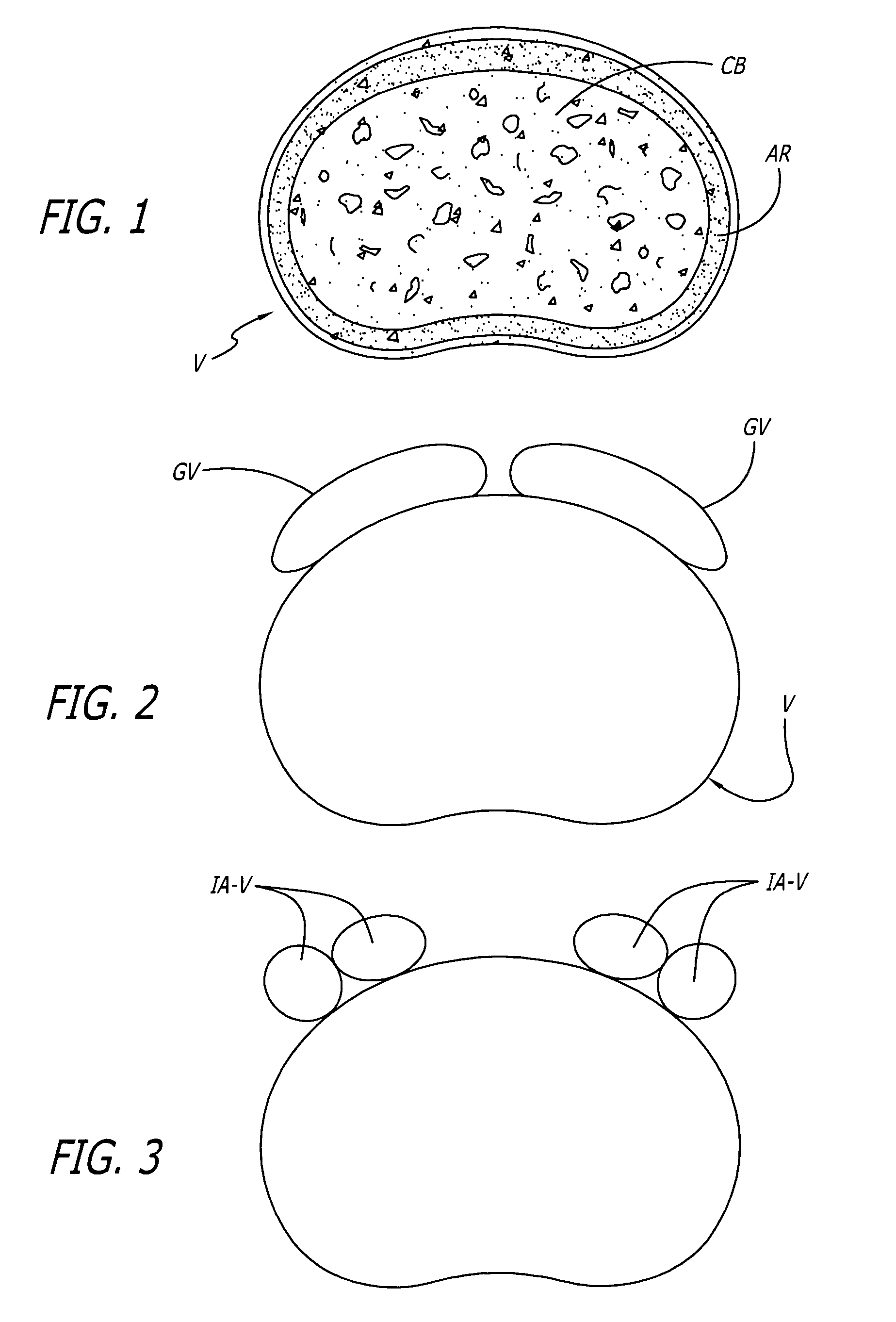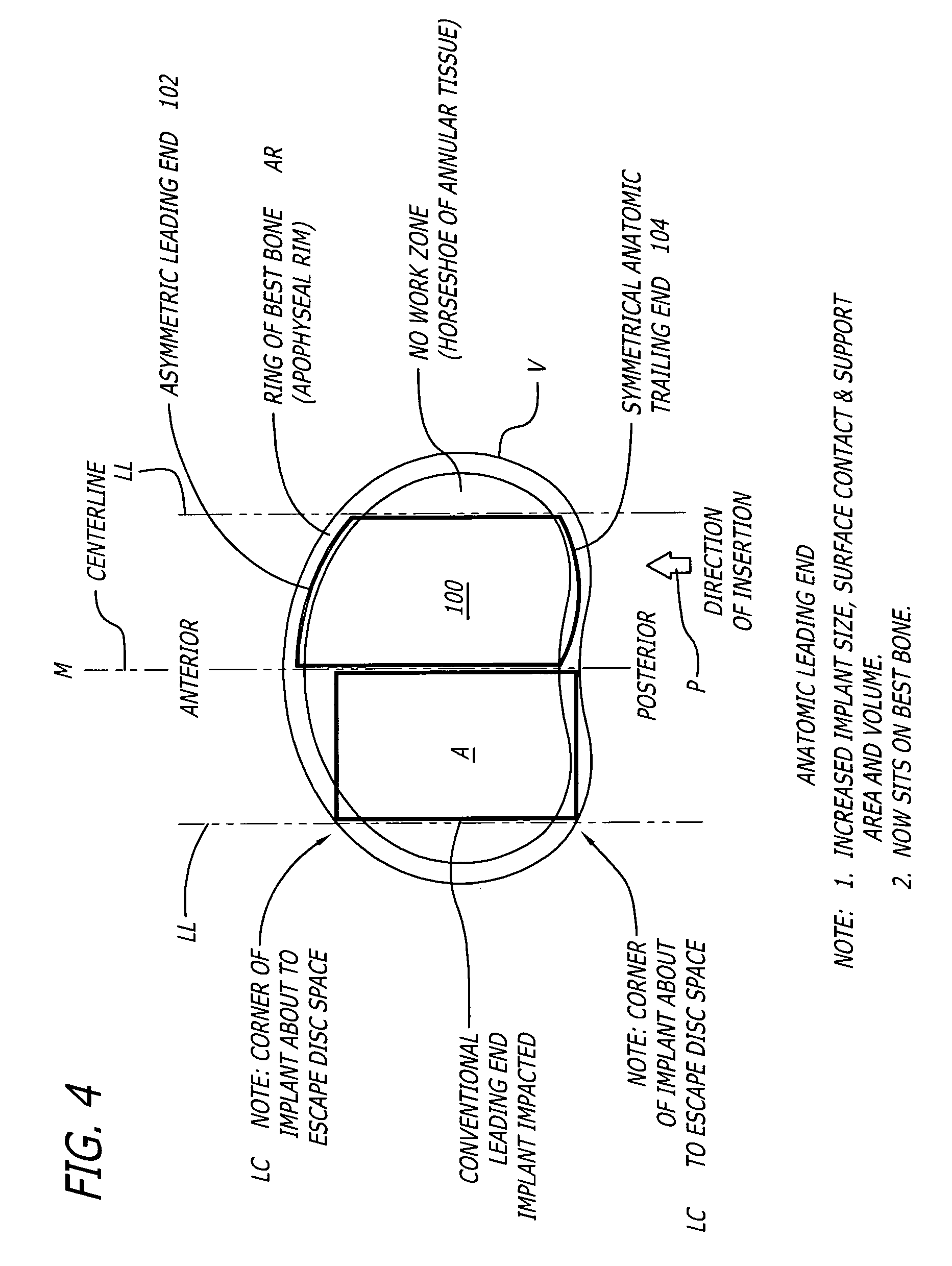Method for installation of artificial hemi-lumbar interbody spinal fusion implant having an asymmetrical leading end
a technology of hemi-lumbar and interbody, which is applied in the field of interbody spinal fusion implants, can solve the problems of affecting the height of implants, the loss of the best structural bone of the vertebral endplate, and the inability to thread implants in, so as to achieve enhanced implant length, maximum contact area, and enhanced implant length
- Summary
- Abstract
- Description
- Claims
- Application Information
AI Technical Summary
Benefits of technology
Problems solved by technology
Method used
Image
Examples
Embodiment Construction
[0044]FIG. 4 shows an embodiment of the present invention comprising an interbody spinal implant generally referred by the numeral 100, inserted in the direction of arrow P from the posterior aspect of a vertebral body V on one side of the centerline M in the lumbar spine. Implant 100 has a leading end 102 for insertion into the disc space and an opposite trailing end 104. In a preferred embodiment, leading end 102 is configured to not extend beyond the outer dimensions of the two vertebral bodies adjacent the disc space proximate leading end 102 after implant 100 is installed, to maximize the area of contact of the implant with the vertebral bone. Leading end 102 could be described as being generally configured to generally conform to at least a portion of the natural anatomical curvature of the aspect of the vertebral bodies adjacent the disc space proximate leading end 102 after implant 100 is installed. The general configuration of leading end 102 is further described in connect...
PUM
| Property | Measurement | Unit |
|---|---|---|
| radius | aaaaa | aaaaa |
| arc of radius | aaaaa | aaaaa |
| height | aaaaa | aaaaa |
Abstract
Description
Claims
Application Information
 Login to View More
Login to View More - R&D
- Intellectual Property
- Life Sciences
- Materials
- Tech Scout
- Unparalleled Data Quality
- Higher Quality Content
- 60% Fewer Hallucinations
Browse by: Latest US Patents, China's latest patents, Technical Efficacy Thesaurus, Application Domain, Technology Topic, Popular Technical Reports.
© 2025 PatSnap. All rights reserved.Legal|Privacy policy|Modern Slavery Act Transparency Statement|Sitemap|About US| Contact US: help@patsnap.com



